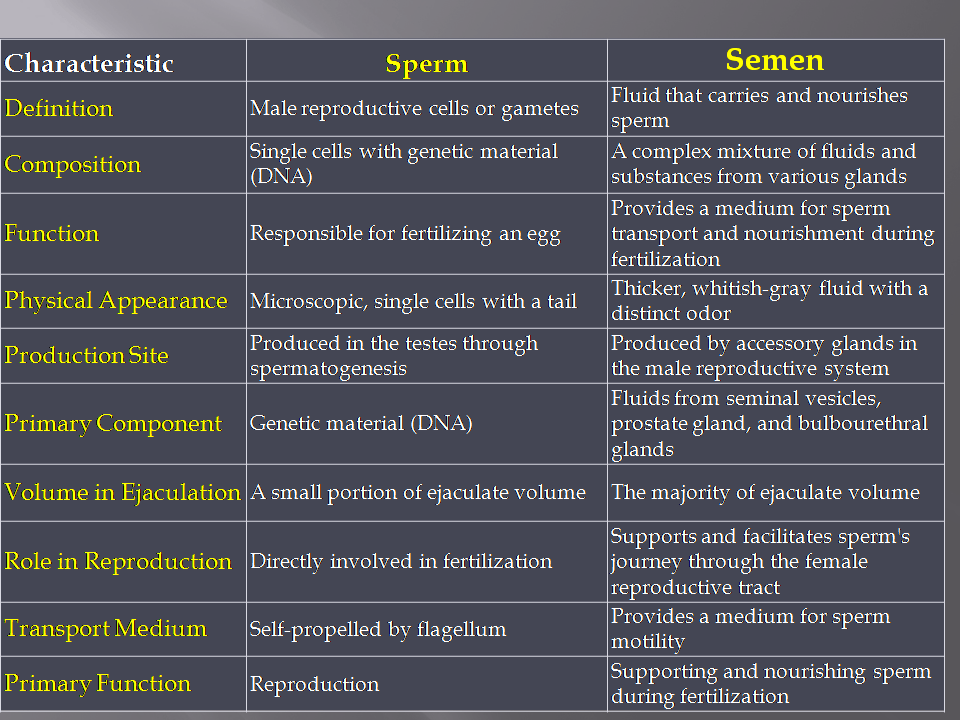Here you understand the difference between sperm and semens.

Sperm and semen are two distinct components involved in the male reproductive system, each serving a unique role in the process of fertilization.
Here are the key differences between sperm and semen.
Sperm: Sperm refers to the male reproductive cells (gametes) that are produced in the testes. Each sperm cell is a microscopic, single-celled organism with a tail (flagellum) that allows it to swim.
Semen: Semen is a fluid that contains a mixture of various substances produced by different glands in the male reproductive system. It is ejaculated from the male’s urethra during sexual climax (ejaculation) and serves as a vehicle for delivering sperm.
- Composition:
- Sperm cells are primarily composed of genetic material (DNA) and cellular structures necessary for motility. They carry the genetic information from the male parent to fertilize an egg.
- Semen is a complex fluid that includes sperm as well as various other components. It contains seminal vesicle secretions, prostate gland secretions, and fluid from the bulbourethral glands. These components provide nutrients, protection, and an alkaline pH environment for sperm.
- Function:
- The primary function of sperm is reproduction. Sperm cells are responsible for fertilizing an egg cell (ovum) during sexual reproduction, leading to the formation of a zygote, which eventually develops into an embryo.
- Semen plays a supportive role in reproduction. It provides a medium in which sperm can swim, survive, and be transported into the female reproductive tract.
- Seminal fluid also contains nutrients and substances that nourish and protect sperm on their journey.
- Physical Appearance:
- Sperm cells are microscopic, elongated, and have a distinctive head with genetic material and a flagellum (tail) that propels them forward.
- Semen is a thicker, whitish-gray fluid with a distinct odor. It is visible during ejaculation and can vary in volume.
- Production Site:
- Sperm cells are produced in the testes through a process called spermatogenesis.
- Seminal fluid is produced by various accessory glands, including the seminal vesicles, prostate gland, and bulbourethral glands. These fluids mix with sperm in the male reproductive tract.
- Transport Medium:
- Sperm cells are transported within the male reproductive tract by their own motility (swimming).
- Semen serves as a medium for transporting and nourishing sperm, facilitating their movement through the female reproductive tract.
1 thought on “What is the difference between sperm and semens”